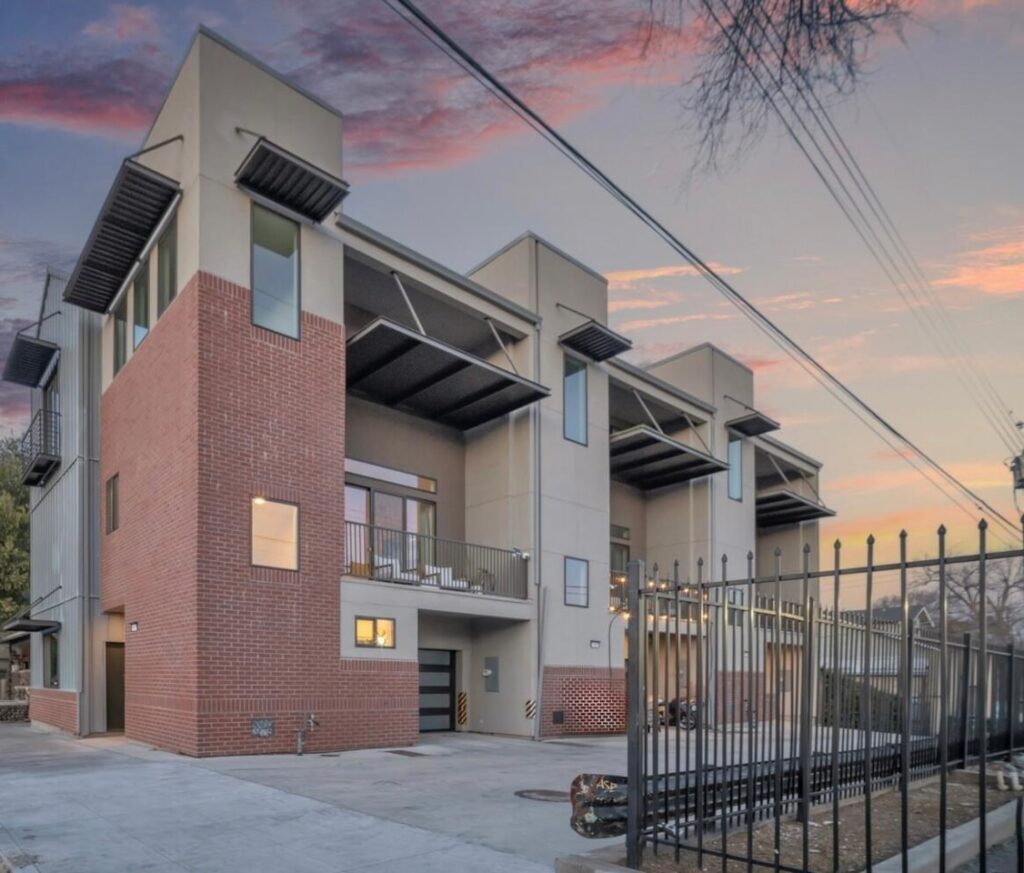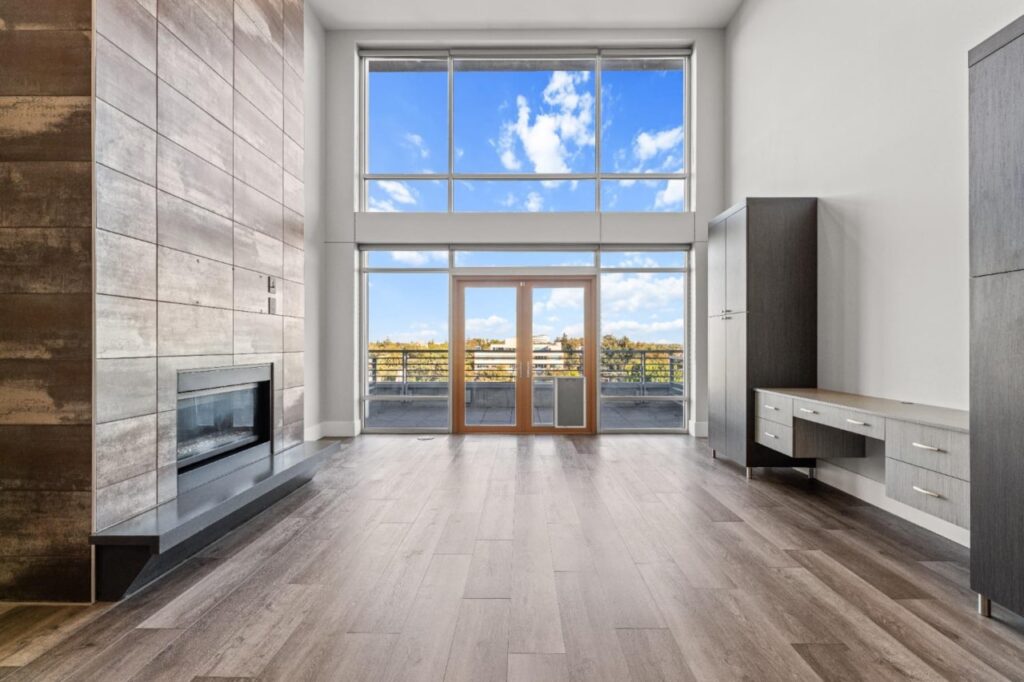Drive through downtown Sacramento at night and you’ll notice something strange: dozens of shiny new “luxury” apartment buildings with suspiciously dark windows. Despite a housing crisis and skyrocketing rents, these high-end units are sitting empty.
The developers and city officials will feed you some bullshit about “absorption rates” and “market adjustments.”
But I’ve talked to property managers, real estate investors, and tenants who’ve fled these buildings, and the real story is much more interesting – and infuriating.
THE FANTASY VS. THE REALITY
These luxury developments were sold to the city and investors based on a fantasy: wealthy Bay Area transplants and high-paid state workers would flock downtown, eager to pay $2,800 for a 700-square-foot one-bedroom with a rooftop dog park and a lobby that looks like a boutique hotel.
The reality? Sacramento isn’t San Francisco, and our market can’t sustain San Francisco prices – especially when the actual product doesn’t match the glossy brochure.
THE PRICE PROBLEM
Let’s start with the obvious: the rent is too damn high.
The average “luxury” one-bedroom in downtown Sacramento is priced between $2,400-3,200. The median individual income in Sacramento? About $65,000. Financial experts recommend spending no more than 30% of your income on housing, which means the average Sacramento resident should pay no more than $1,625 monthly.
See the problem?
“These developers came in with Bay Area profit expectations but didn’t understand Sacramento incomes,” explains Maria Chen, a local real estate analyst. “They’re pricing for a market that doesn’t exist here in sufficient numbers.”
Even state workers with decent salaries can’t make the math work, especially with student loans, car payments, and the rising cost of everything else.

THE QUALITY ILLUSION
Walk into one of these buildings and you’ll be impressed by the lobby – designer furniture, fancy coffee machines, maybe a fireplace or water feature. The model unit will have upgraded everything and perfect lighting.
Then you move in and discover the truth.
“I paid $2,700 for my apartment, and I could hear my neighbor’s entire phone conversations through the wall,” says former tenant Michael Ramirez. “The appliances were all bottom-shelf with fancy facades, and things started breaking within months.”
This is the dirty secret of “luxury” apartments: they’re often built with the cheapest materials legally allowed, dressed up with cosmetic finishes to photograph well.
Common complaints from former tenants include:
- Paper-thin walls and ceilings (hope you like your neighbor’s Peloton routine at 5 AM)
- Cheap appliances with stainless steel fronts that dent if you look at them wrong
- Plumbing issues that take weeks to resolve
- HVAC systems that can’t handle Sacramento summers
- Amenities that are perpetually “temporarily closed for maintenance”
“They spend the money where you see it during the tour, not where it matters for actually living there,” explains contractor Dave Simmons, who’s worked on several of these buildings. “The profit margins depend on cutting corners everywhere you can’t immediately see.”
THE HIDDEN FEES GAME
The advertised rent is just the beginning. Most of these buildings have mastered the art of fee-stacking to extract hundreds more from tenants each month.
A partial list of actual fees from downtown luxury buildings:
- Mandatory valet trash service: $25-45/month
- Pet rent (on top of pet deposits): $50-75/month per pet
- Reserved parking: $200-350/month • Package handling fees: $2-5 per package
- Amenity maintenance fees: $50-100/month
- Administrative fees: $15-30/month
- Water/sewer/garbage “billing service” fees: $50-75/month (on top of actual utility costs)
“My advertised rent was $2,450, but my actual monthly payment was over $3,000 after all the mandatory fees,” says former tenant Jessica Lin. “They don’t disclose half of these until you’re signing the lease.”

THE INVESTOR SHELL GAME
Here’s where it gets really interesting. Many developers aren’t actually trying to fill these buildings – at least not right away.
“These properties are built as investment vehicles first, housing second,” explains commercial real estate attorney Robert Mendez. “The business model often involves selling the building to a REIT [Real Estate Investment Trust] or institutional investor based on ‘projected occupancy and income’ rather than actual performance.”
In other words, they’re building to sell to the next investor, not to create viable housing for Sacramento residents.
This explains why many buildings would rather keep units empty than lower rents. Reducing the rent roll, even temporarily, could reduce the building’s paper value when it’s time to sell or refinance.
“It’s more profitable for some of these buildings to maintain the illusion of high market rates with 60% occupancy than to be fully occupied at lower rates,” says Chen. “It’s perverse, but that’s how the financing works.”
THE AMENITY BAIT-AND-SWITCH
Remember that rooftop pool, co-working space, and state-of-the-art fitness center that sold you on the building? Good luck actually using them.
Tenants report:
- Pools that are closed most of the year for “maintenance”
- Fitness centers with perpetually broken equipment
- Co-working spaces converted to leasing offices
- Promised amenities that never materialize • Staff shortages that mean limited hours for facilities
“They showed me this amazing rooftop lounge during my tour, but after I moved in, it was only open two days a week for limited hours because they didn’t want to staff it,” says former tenant Alex Winters. “When I complained, they said amenity hours were ‘subject to change’ according to the lease I signed.”
THE MANAGEMENT REVOLVING DOOR
Notice how these buildings seem to change management companies every 12-18 months? That’s not a coincidence.
“Property management companies are set up to fail in these buildings,” explains former property manager Tina Brooks. “The owners demand impossible occupancy rates at these price points, then blame management when reality doesn’t match their spreadsheet projections.”
The result is constant turnover in management, undertrained staff, and a tenant experience that ranges from mediocre to nightmarish.
THE AIRBNB FACTOR
Walk the halls of these buildings at night and you’ll notice another oddity: apartments that function as de facto hotel rooms.
Many buildings have quietly shifted to renting units to corporate housing companies or allowing owners to list units on Airbnb and VRBO. Some developers even have side agreements with corporate housing providers from the start.
“At least 30% of the units in my building were short-term rentals,” says downtown resident Carlos Vega. “There were different people in the hallways every day, having parties, not knowing the rules. It wasn’t a community, it was a hotel without staff.”
This creates security issues, excessive wear and tear on amenities, and a revolving door of strangers in what’s supposed to be your home.
THE DOWNTOWN AMENITY DESERT
These buildings sell the downtown lifestyle, but Sacramento’s downtown still lacks the infrastructure to support it.
Try finding a reasonably priced grocery store within walking distance of most of these buildings. Or a hardware store. Or a pharmacy that’s open past 6 PM.
“I moved downtown for the urban lifestyle but found myself driving to the suburbs for basic necessities,” says former downtown resident Sophia Williams. “What’s the point of paying a premium for downtown living if I still need a car for everything?”
The city has approved thousands of new units without ensuring the neighborhood services needed to support them. The result is buildings full of amenities surrounded by neighborhoods lacking them.
WHO’S ACTUALLY RENTING THESE PLACES?
With all these issues, who’s actually living in these buildings?
- Young professionals with parental support (the Bank of Mom and Dad is a major downtown housing subsidizer)
- Couples with dual high incomes and no kids
- State workers with roommates
- Corporate transplants with temporary housing allowances
- Empty nesters who sell suburban homes and can pay cash
- Short-term renters who haven’t discovered the problems yet
Notably absent: the middle-class backbone of Sacramento, families, and long-term residents who build community.
THE SOLUTION THAT NO ONE WANTS TO DISCUSS
The obvious solution would be lowering rents to match local incomes. A 25-30% reduction would fill these buildings overnight.
But that’s not happening because:
- It would force developers to acknowledge their financial models were flawed
- It would reduce property valuations across the market
- It would impact the city’s projected tax revenue
- It would make current tenants (who are paying full price) revolt
Instead, buildings offer “two months free” promotions that maintain the illusion of high market rates while temporarily reducing actual costs. Once that promotion ends, tenants face the choice of a massive rent increase or the cost and hassle of moving.
THE FUTURE OF DOWNTOWN HOUSING
The current situation isn’t sustainable. Something has to give. Industry insiders predict several possible outcomes:
- Some buildings will be sold at losses to investors who can make the numbers work at lower rent points
- Conversion of some properties to condos (though the construction quality issues make this problematic)
- Increased incentives from the city to fill these units (essentially public subsidies for private developers’ mistakes)
- A wave of refinancing challenges as interest rates rise and occupancy fails to meet projections
“The next 18-24 months will be revealing,” says Chen. “Several of these properties have construction loans coming due for refinancing, and without the projected occupancy and income, some developers may face serious financial pressure.”
THE BOTTOM LINE
Sacramento’s empty luxury apartments aren’t just a market curiosity – they’re the physical manifestation of a broken housing system that prioritizes investor returns over actual housing needs.
The city needs housing at all price points, but especially in the middle range that actual Sacramento residents can afford. Instead, we’ve gotten buildings designed to look good in investment portfolios rather than serve as functional homes.
Until developers align their products with local economic realities – or the city requires affordable units in these buildings – expect to see those empty windows continuing to dot the downtown skyline.
And if you’re considering signing a lease at one of these places? Read the fine print, talk to current residents (not just the ones the leasing office introduces you to), and visit at night and on weekends to see how the building actually functions when the leasing office is closed.
That “luxury” might not be so luxurious after all.
Check out our post on which neighborhoods are worth your money here!




